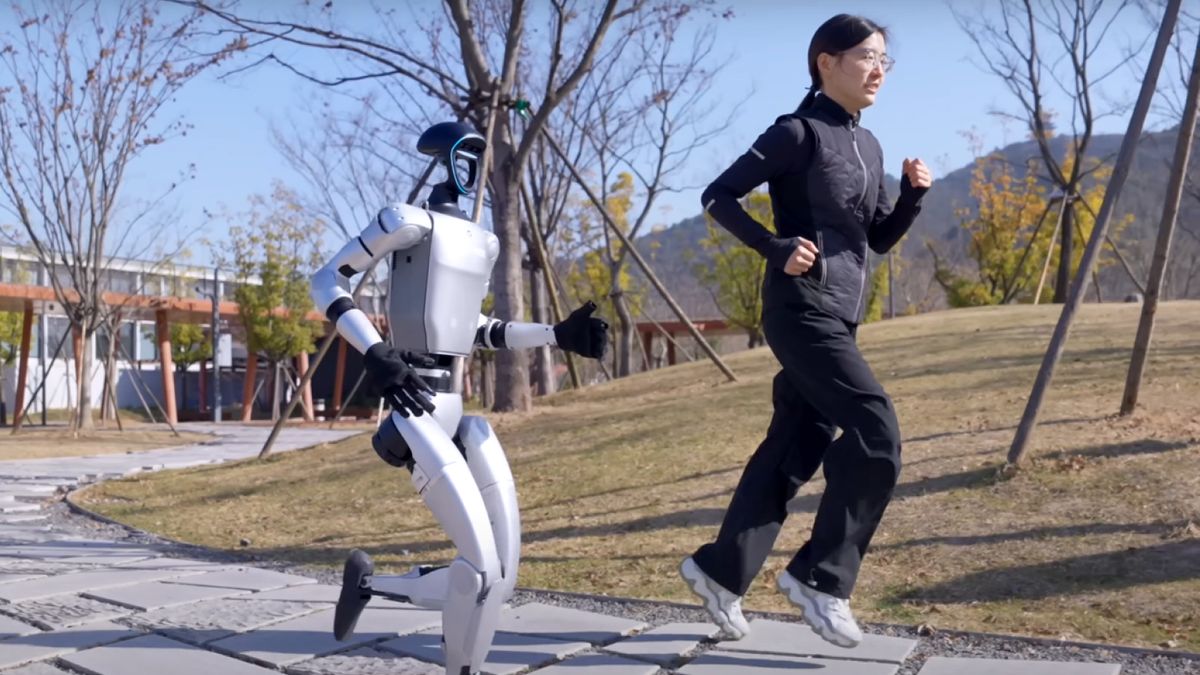Watch On
Researchers in China have developed; a new type of humanoid robot that can walk and run over a variety of terrains — reaching speeds of about 4.5 miles per hour (7.2 kilometers per hour).
Moving and walking has always been a challenge for bipedal robots, as operating on two legs is an inherently unstable process. We walk by essentially allowing ourselves to fall forwards before catching ourselves with our other leg, then repeating the action. However, developers have struggled to replicate this type of movement in programming for robots, as it runs contrary to the need for the robot to remain balanced.
Chinese robotics company Unitree has overcome this challenge with its G1 Bionic robot by using 3D lidar sensors and depth-sensing cameras that enable the robot to perceive its environment in real time and continuously adjust its posture accordingly. The robot’s joints also use force-control technology to dynamically adjust power output, enabling it to remain balanced.
Unitree recently released a video showing G1 Bionic walking and running up and down hills, across railroad sleepers and over rocks. However, the video does not show how the robot begins running, or any changes of speed, so it’s unclear how well it copes with these challenges.
The developers designed the robot’s controlling AI to mimic human movements across various terrains, by training it on a dataset of motion-capture footage of the full human body. The G1 Bionic’s steady running pace looks akin to that of a jogger with an exaggerated step.
Many of today’s industrial robots require either regular battery recharging or direct connection to a power supply. Given the outdoor environment in which Unitree showcases its agile robot, and the lack of any obvious power leads, we can assume the G1 Bionic is also relying on battery power. However, it’s not known how long its operational battery life could be.
A humanoid robot is likely to have a natural advantage in environments that are designed for humans to move around in, such as cities and buildings. If the robot is also able to carry something while running, it could be valuable for assisting emergency services in hazardous situations, for example.
